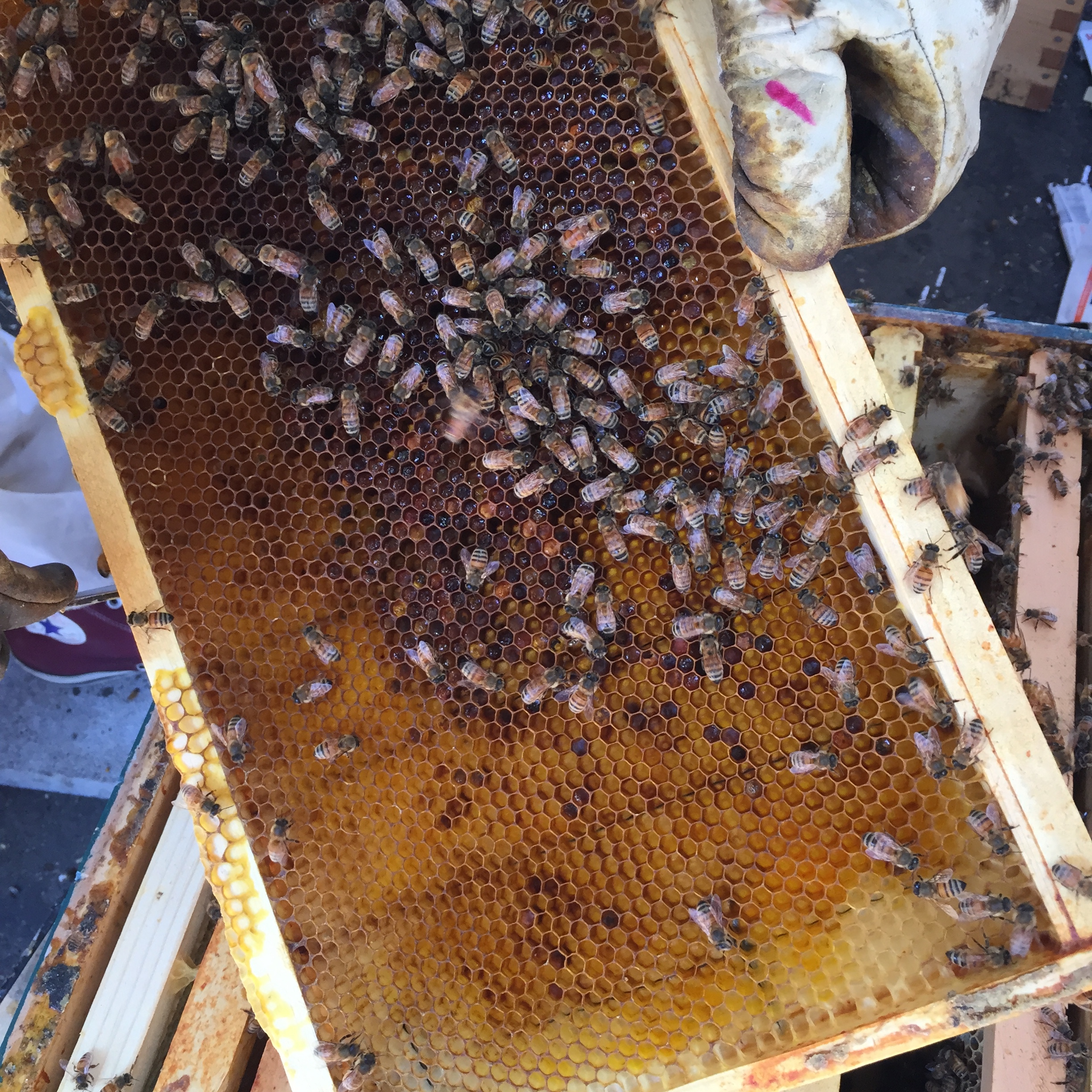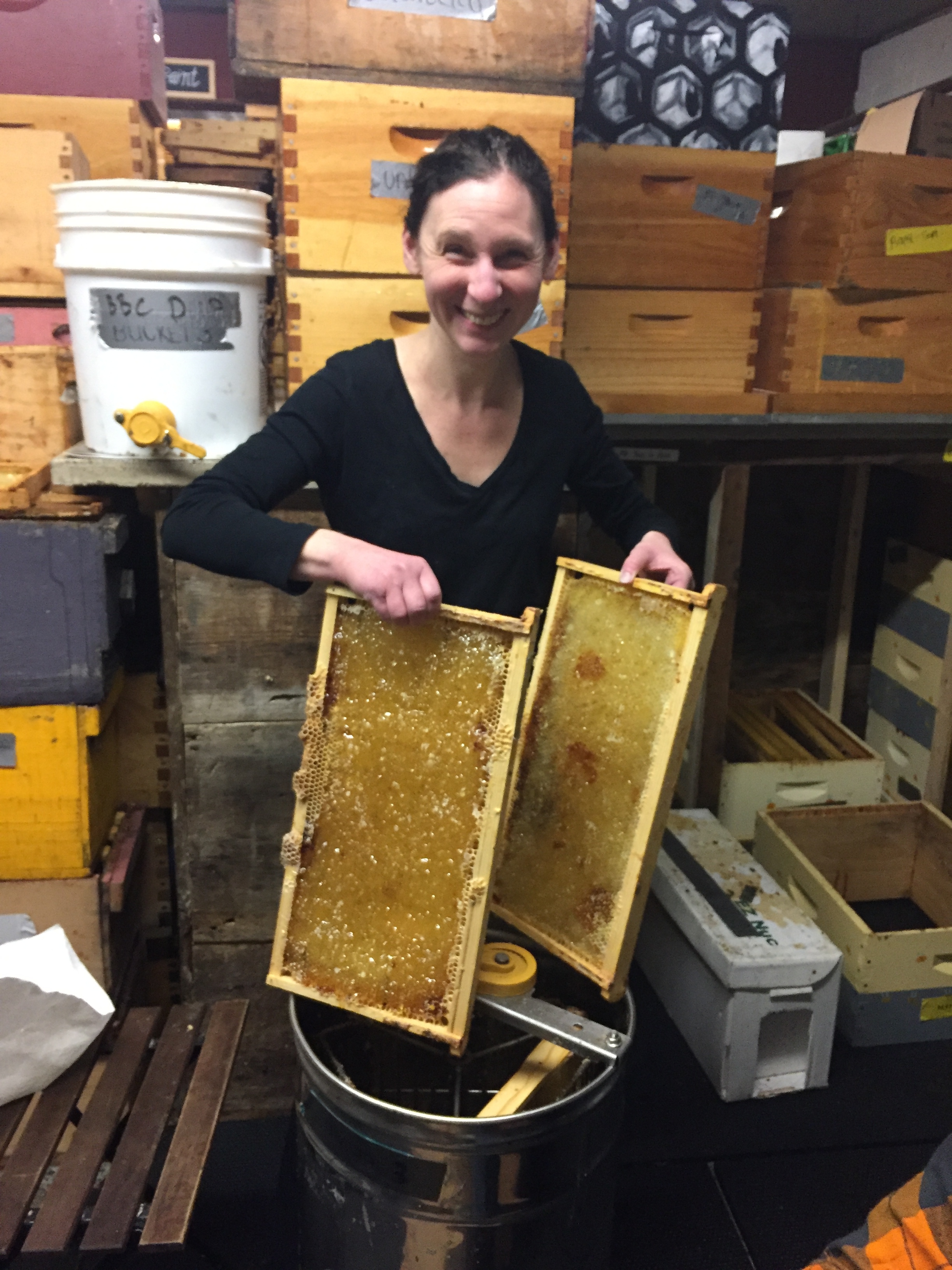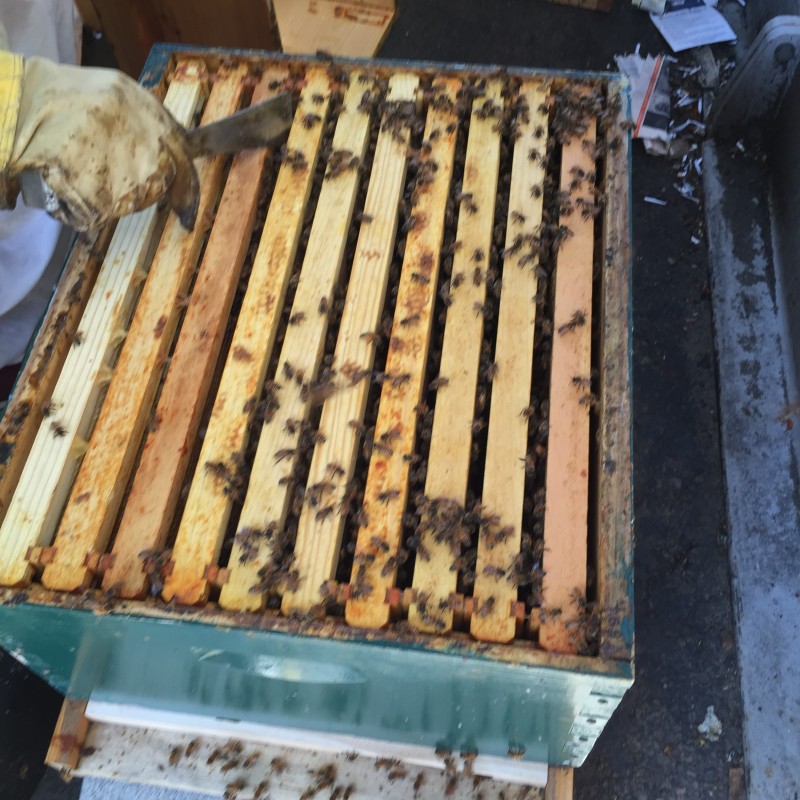
“The queen is the one with the elongated body, with fewer stripes than the others.” The beekeeper turns the frame slightly, angling it into the summer sunshine. “The workers are huddling around her, trying to protect her, but you should be able to see her . . . right there . . .” And suddenly, she appears. I quickly snap some quick iPhone photos with my one ungloved hand, before faithful servants reposition themselves to hide their queen.

Up on a car lift, in the back of an autobody shop, in a full bee suit, sweating in the July heat, I think back to the snowy morning several months before, when Noah Wilson-Rich, Founder and Chief Scientific Officer of The Best Bees Company, first asked me if Formaggio would be interested in adopting some urban bees. As Honey Buyer for Formaggio Kitchen South End, I reached out to Noah in the course of some research into local honey producers. Over coffee, he introduced me to Best Bees, their ongoing research, urban beekeeping, and his team at the South End Bee Sanctuary. Fast forward to July, sweat on the tip of my nose, I am the humble mentee of the talented Best Bees crew (and amateur bee paparazza).

Our beehive had a bit of a challenging season. The most critical factor for a successful beehive is to have a strong queen. When a queen is not doing her job (or not doing it well) the worker bees will seek to replace her. Early in the season, our bees staged a coup and hatched a new queen to overthrow their first queen; only to have the usurper fail. The Best Bees team then introduced a third queen, who finally solidified the confidence of her workers and the health of their hive.

Visiting every few weeks throughout the season, I had the opportunity to watch our beehive grow from a one-box hive, to a successful colony filling two boxes; from marginally-healthy numbers of brood (baby bees), to a robust population. While at first they produced just enough honey to sustain the bees, by the end of the season they'd produced such sufficient honey that we considered harvesting some (which is rare for a newer beehive!).
In watching our bee colony grow and thrive, many of my preconceptions about honeybees - that they only thrive in country environments filled with open fields or at the least suburban gardens - were absolutely shattered. Our bees’ home - along with all of their neighbor colonies at the Bee Sanctuary - is a field of asphalt, pervaded by aromas of gasoline and motor oil, by sunlight glaring off of windshields of cars under repair, and by sirens of ambulances headed to Boston Medical Center. Yet they seem to relish their environment.

This is a phenomenon that Best Bees’ researchers and other researchers throughout the United States have been observing and seeking to understand more completely: urban bees are overall healthier, their colonies stronger and longer-surviving, and their honey production higher than honeybees in non-urban environments. True, small city gardens abound, and the Boston Common, the Public Garden, and other parts of the Emerald Necklace are well within the flight paths of our bees. Researchers consider the breadth and variety of available foliage in an urban environment - as opposed to monoculture crops seen in most agricultural regions - as contributing factors to the success of urban bees, along with the well-considered placement of urban beehives. The typical placement of urban beehives, many of which are set up high off the ground (e.g., on rooftops), means that the bees will take flight paths above the heads of humans thronging the sidewalks, and may play a role in their success. The lack of applied pesticides in an urban environment might also have an impact, though recent studies suggest that agricultural pesticides actually have been carried into the city.

At the end of the season, we ultimately decided to leave all of the honey our bees had produced in the beehive, to enable the bees to “over-winter” (remain within the hive for the course of the season) with a fully-stocked cellar. However, Best Bees offered the opportunity to process some honey - a gift from another local beehive that had produced far more than its bees or hive owner could use. Under their guidance, I uncapped the honeycomb on several frames, spun the frames in a manually-powered centrifuge in a large steel drum to remove the honey, and captured the honey in jars as it drained through a spigot at the bottom of the drum. Best Bees promised I will be well-prepared to harvest our own honey next season . . .
Marianne Staniunas is a Cheesemonger and Honey Buyer for Formaggio Kitchen South End.

